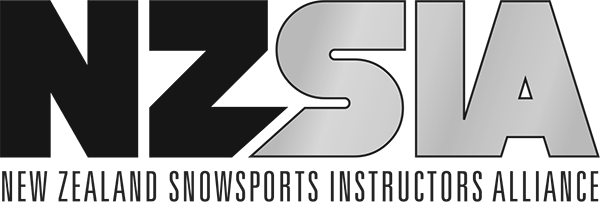Yesterday, Claire and I joined in on a multi-sport on-snow clinic presented by the Ula (Urszula), representing Poland. The title of the clinic was “Track on snow as a didactic message”.
With a little background homework we discovered that didactics is the theory of teaching and its application regard to learning. Given that the clinic was listed as a multi-sport we were keen to join in to see what a broader audience outside of snowboarding had to offer within this specific topic, however only snowboarders attended. We enjoyed the clinic as a tight knit group of six, including some local Bulgarian instructors who were great to connect with about their experiences teaching at Pamporovo.

Ula setting up the Track Symmetry task
Ula kicked things off with us exploring the various channels of communication that instructors commonly use and was encouraging creativity with as many avenues as possible. With some quality input from the group, Ula shaped the start of the clinic to recognise the importance of ensuring that our communication channel was best suited for our students. We continued to discuss this idea and briefly explore the idea that student engagement is vital in any lesson.
Moving into the primary concept, we shifted our main focus on to the use of the pathway created in the snow. We split into pairs and were encouraged to provide feedback to each other within three core exercises with different attributes to focus on.
- Edge angle (skidded vs carved turns)
- Track symmetry
- Pressure (track depth)
With such a specific focus the parameters were purposefully left to interpretation which was great as it was interesting to see some creative input from the group about how they personally approached each task.
Upon further discussion about the tasks it was clear that this clinic was all about opening the mind to the use of tracks in the snow and how to be creative with them when teaching. Ula briefly highlighted a couple of key issues with this teaching tool; busy slopes (people erasing your tracks) and snow conditions that don’t allow for tracks to be set (e.g. icier is harder to create a track).

Claire sharing her creative take on tracks with Ula
Our Reflections
It was fun to re-visit a topic that I think instructors would say that they use in their everyday lessons and after some chairlift chat and with Ula and time to reflect on the clinic, Claire and I took away a couple of simple things that we thought were worth sharing.
Firstly, Ula made sure that when we followed our student to look at their track, we did so a little while after they had ridden away. This was to make sure we were focused on the track and not keeping up. Realistically, this felt like a “track inspection” and was done at a much slower pace so you could really pick out the details and in turn relate this to a performance deficiency or riding issue.
Finally, when following a track in the snow without the rider right in front of you, it really felt like you were following a story or journey about that rider and had an insight into their mindset, emotion and decision making. For example when tracks go from mellow, long drawn out turns in to tighter, smaller tracks that are thinner and disappear only to be seen a few feet further downhill, you get a sense that the rider has decided to be more playful, upbeat and generally being more explosive and active on their board.
– Written by Leo Carey
